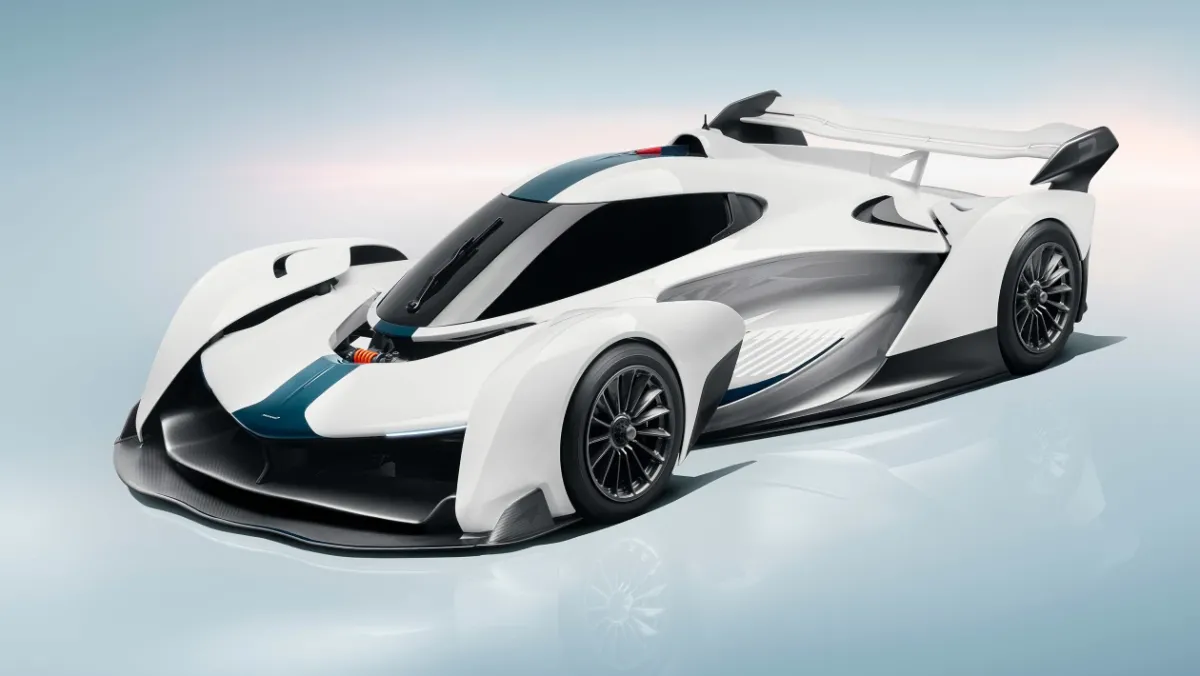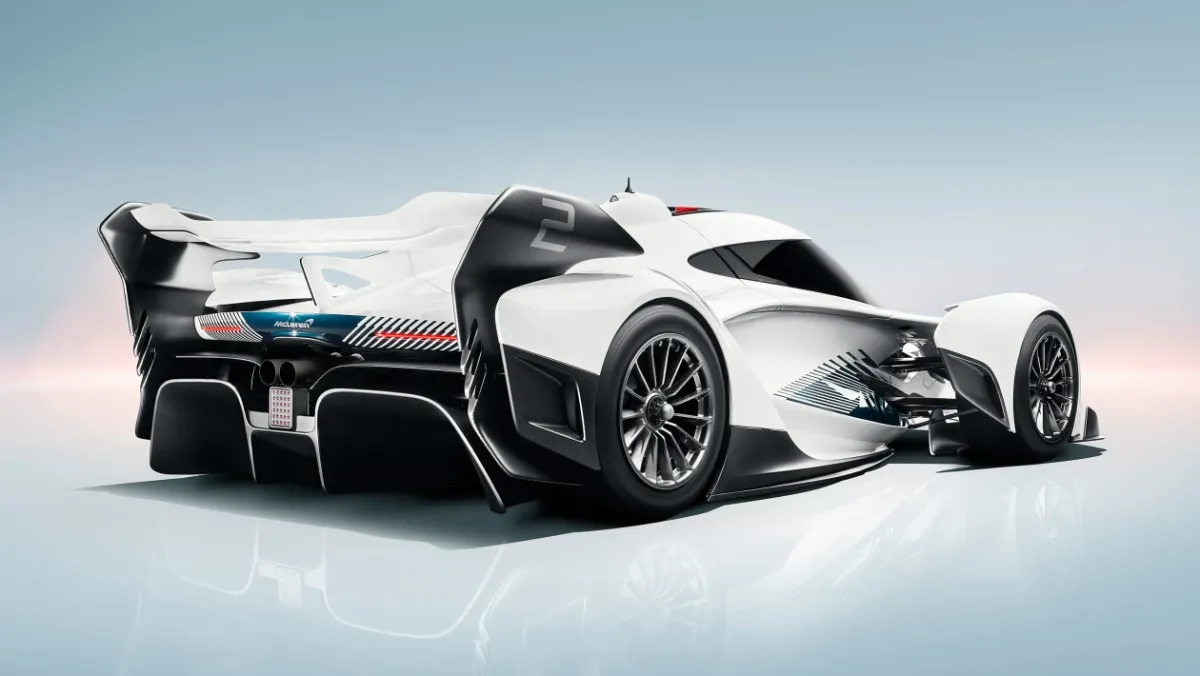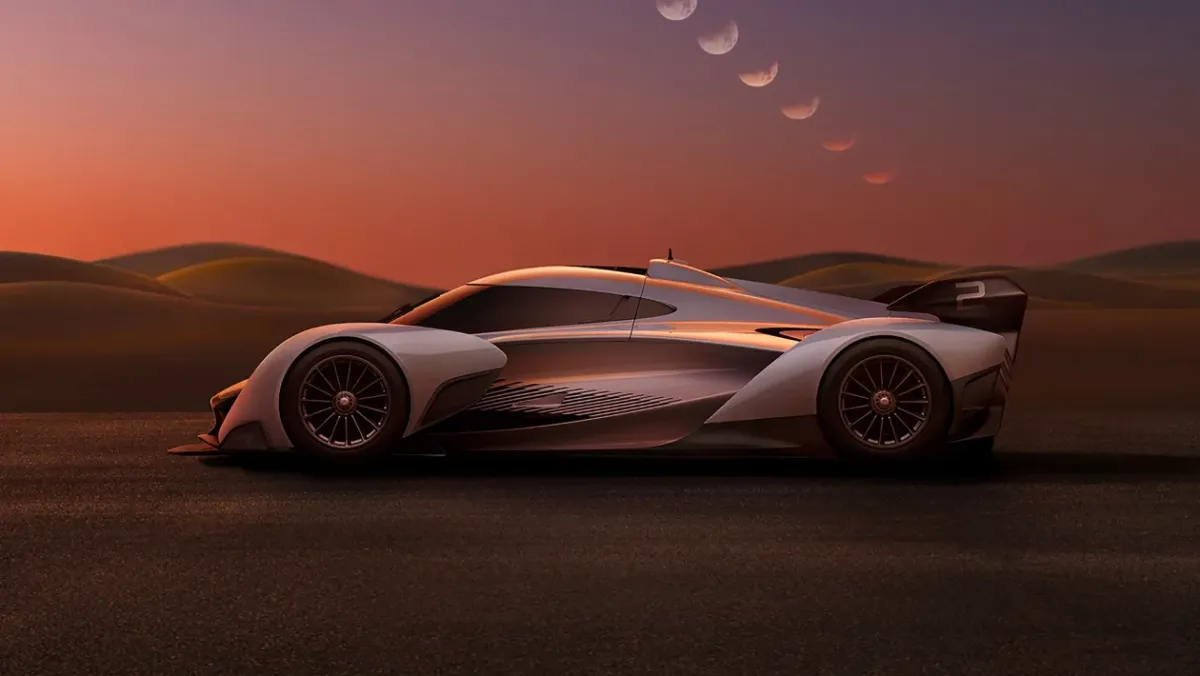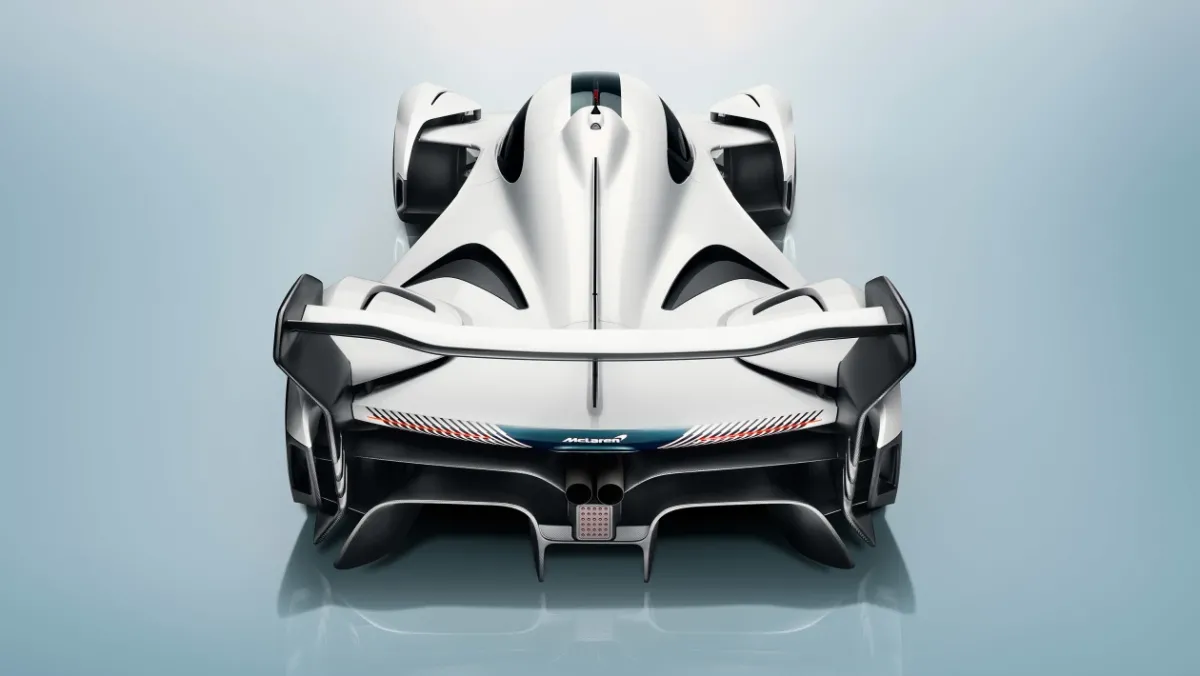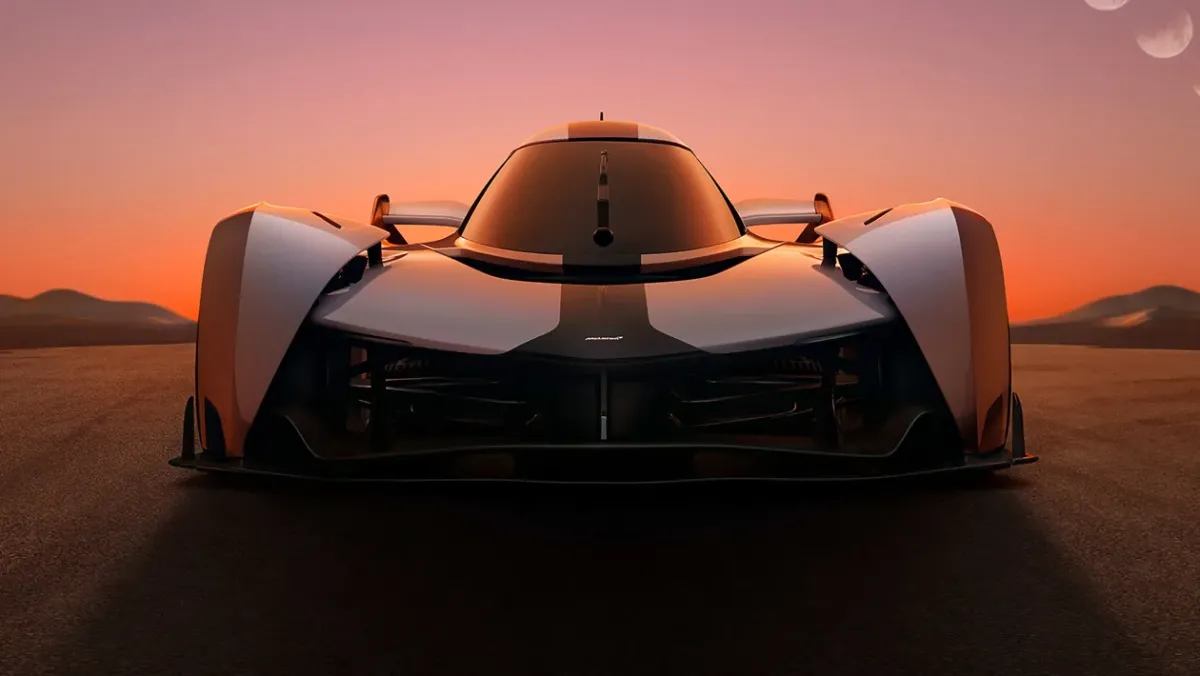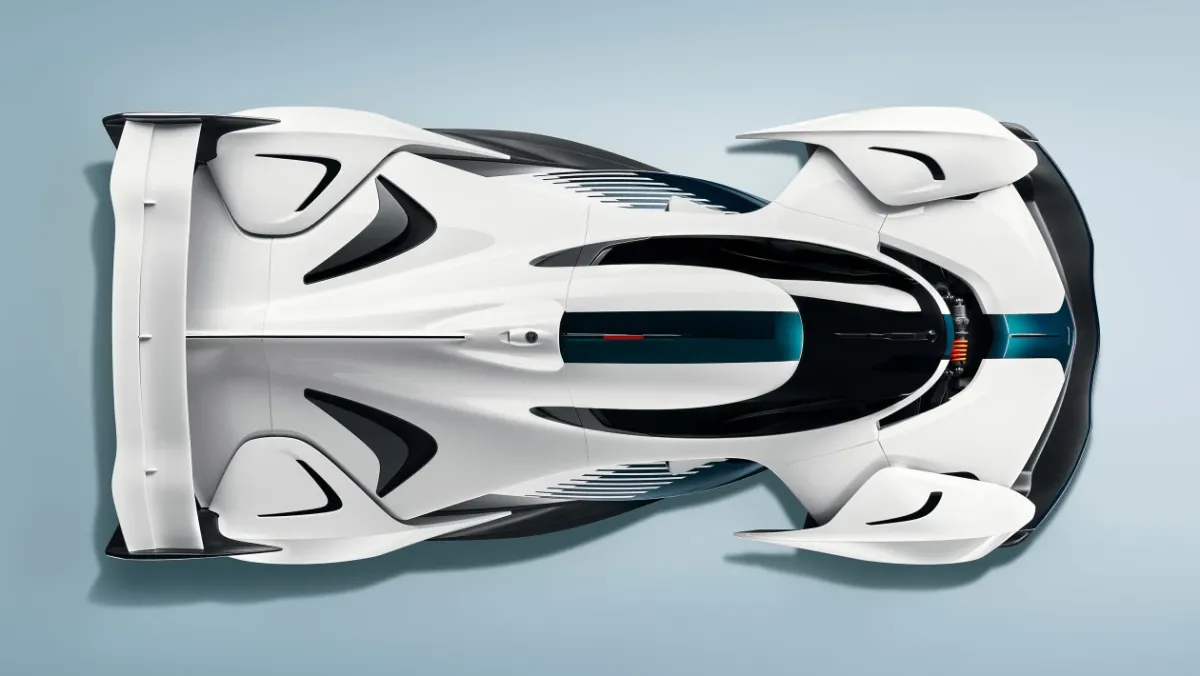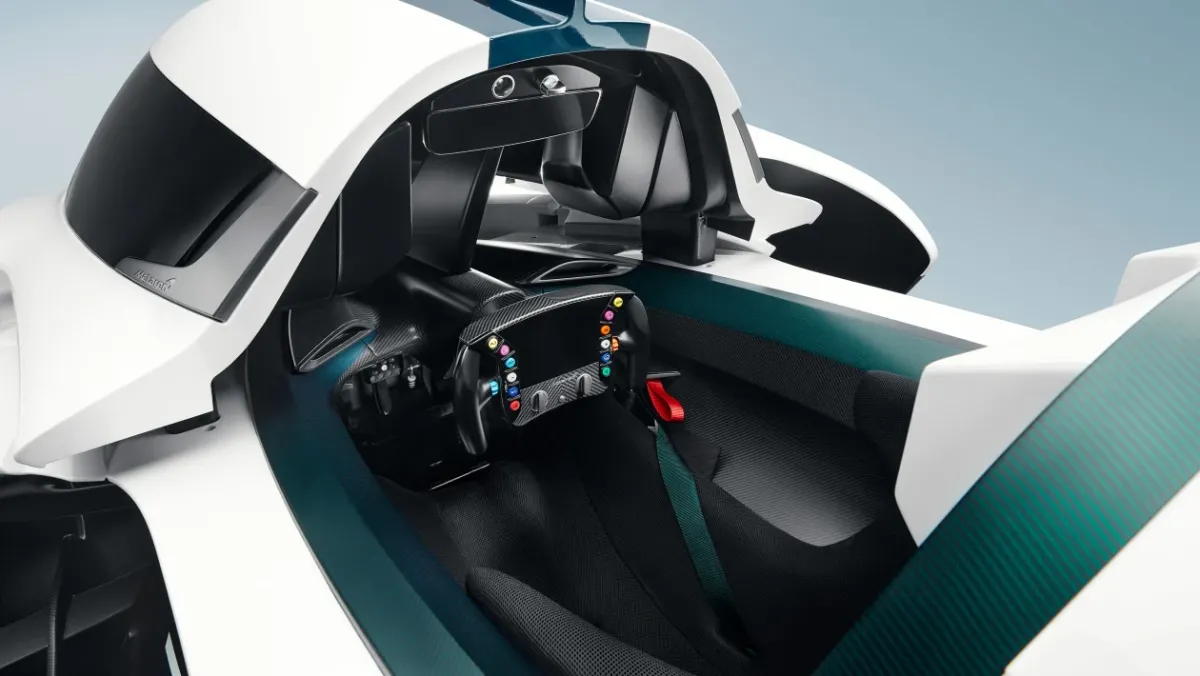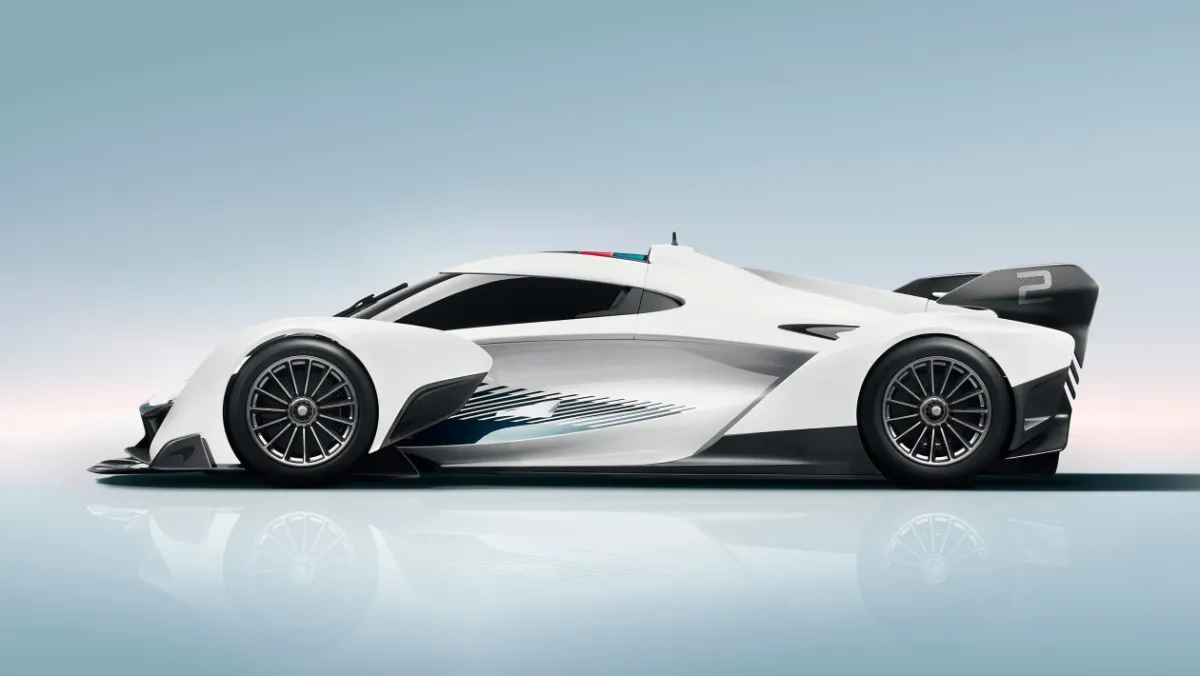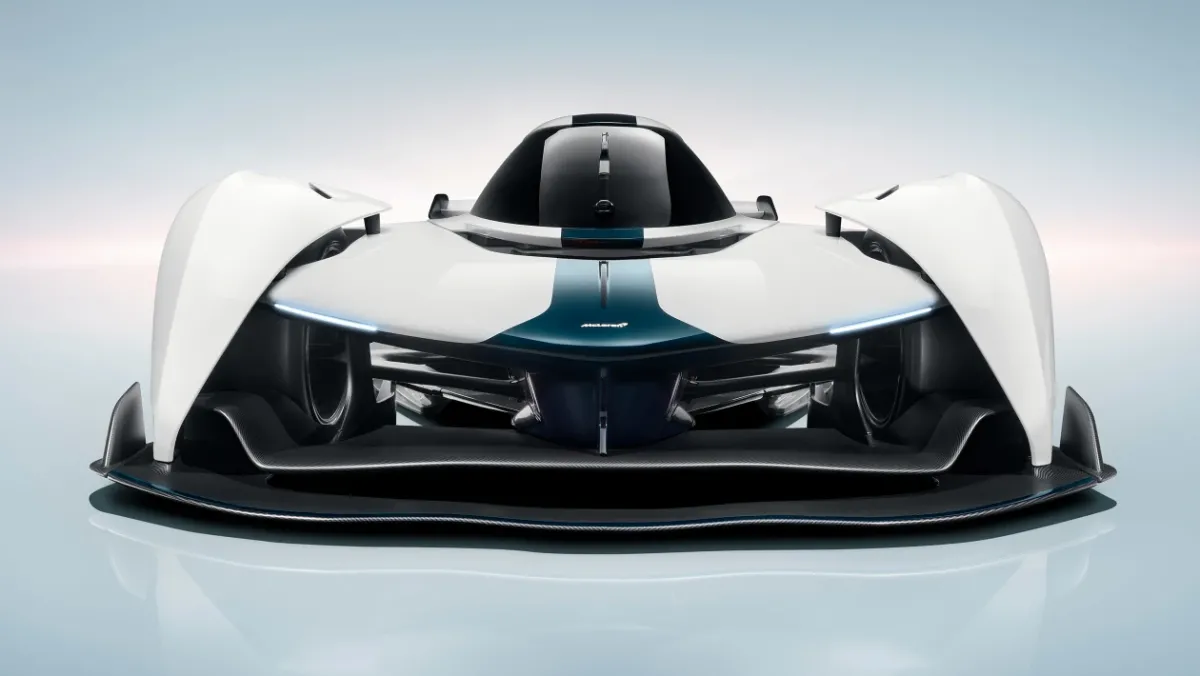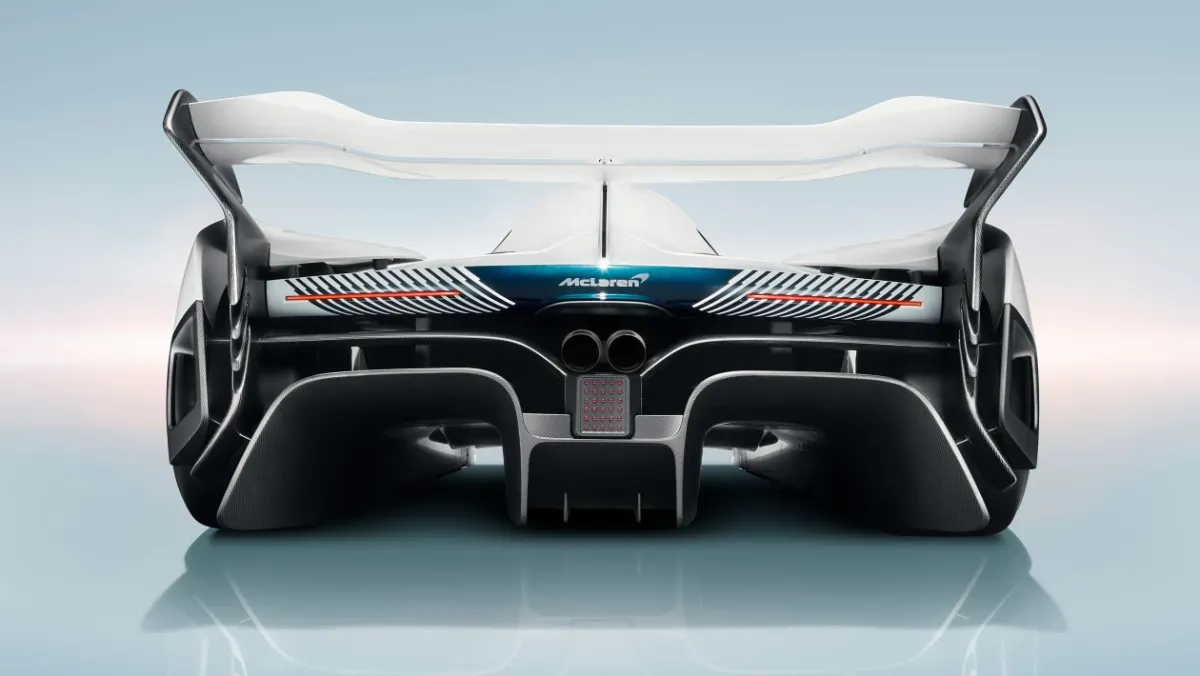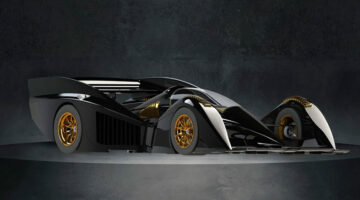McLaren joins the hypercar track day crowd with the Gran Turismo Sport-inspired $3.5m Solus GT, a closed cockpit, single seater powered by an 829bhp Judd V10
Without a doubt the Solus GT would have been well underway before Michael Leiters signed on the line to be McLaren’s new CEO following Mike Flewit’s departure. Even so, when the first car you present to the public in your new job is a mid-engined, closed cockpit, single seater track only hypercar powered by a 5.2-litre naturally-aspirated V10 with its roots firmly planted at Le Mans, is quite the entrance to make. Then again, if you’re going to be a bear, you might as well be a grizzly.
In fact, the Solus GT started life way before Ferrari’s former technical boss was leaving Maranello, appearing as far back as 2017 as a concept you could ‘drive’ in Gran Turismo Sport. Much of that car’s design has been retained to create the $3.5m track car that’s been revealed here. 25 will be built and you’ve guessed it, they are all sold.
What have you missed by not being in McLaren’s black book? For a car McLaren is at pains to say is not a sign that it’s about to announce its World Endurance entry, the Solus is remarkably close to an LMP car in terms of specification. For good reason when you dive into its specification. Its carbonfibre monocoque combines McLaren’s know-how from building road and race cars from the last 40 years using the magic weave, and its specification is very close to past and present LMP racers. This includes front and rear impact structures made from carbonfibre, rather than aluminium as they are on McLaren’s road cars, and the engine and gearbox both being stressed chassis members.
Talking of the engine, it too has LMP links and is as far removed from the company’s regular 4-litre, twin-turbo V8 (or the Artura’s hybrid V6) that you can get. It’s still made in the UK, but not by McLaren’s regular supplier Ricardo, instead Judd took responsibility for building the 5.2-litre V10s for the Solus.
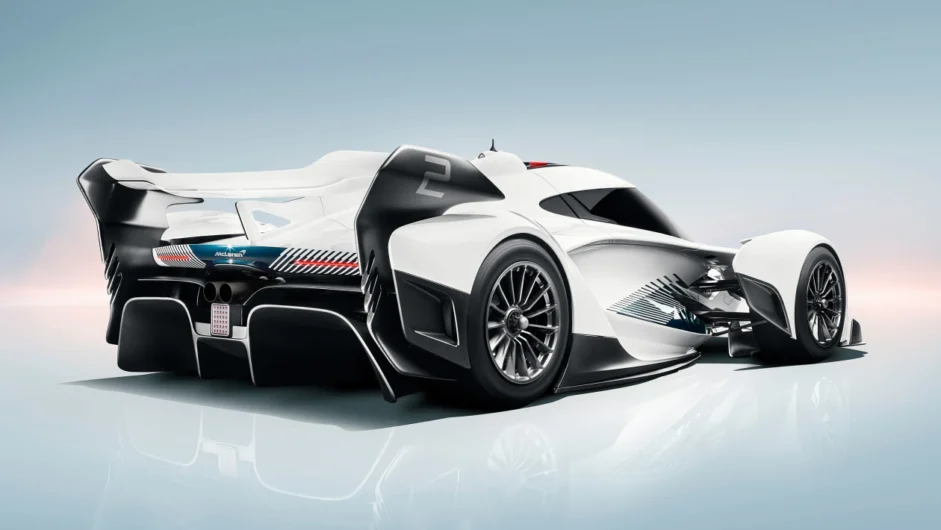
Its heritage is in sports car racing, powering the Pescarolo 01 Le Mans car to second place in 2006, and retains the 70-degree V-angle, the forty-valve head, four-valves per cylinder, direct injection and dry sump specification. However, the majority of the internals have been redesigned and upgraded to McLaren’s bespoke specification, including the crank, cylinder capacity, air intake and exhaust. There’s also gear-driven camshafts and ancillary systems that do away with chains and belts, and the barrel throttles for each of the ten cylinders are designed to sharpen throttle response. Further management tweaks will result in more torque and improved drive ability, further increasing the V10’s maintenance schedule that make derivatives of this engine a firm favourite amongst those who run classic Le Mans and F1 cars who don’t relish the idea of an engine strip down every 483 kilometers.
In terms of performance the naturally-aspirated V10 will produce up to 829bhp at 10,000rpm and 479lb ft at an as yet undisclosed peak driven through a motorsport sourced seven-speed sequential gearbox, with straight cut gears and a multi-plate carbon fibre clutch of a pure Le Mans car. All in a car with a target weight of less than 1000kg – McLaren is expecting around 950kg, possibly less. 322kph plus is the expected top speed, but its engine performance plays second fiddle to the 1200kg of downforce its carbon composite body will generate.
Its body is designed purely to meet its aerodynamic needs. There is no active aero and when you see it from dead ahead it’s not hard to see the single seater influence in terms of how open the front of the car is (the cooling radiators are positioned in the side pods) to maximise its aero performance under, through and over the car to to twin-element fixed rear wing and ground effect tunnel diffuser. The entire rear wing structure is mounted to the rear impact structure, which in turn is bolted to the gearbox.
Unlike LMP racers, the Solus is purely a single seater with the driver entering the cockpit through a fighter jet style canopy that slides forward on a mechanical mechanism. Once inside it’s pure racer, with a fixed seat and adjustable pedals (a set up McLaren’s Lando Norris has been consulted on), with each owner going through a seat fitting process to make sure their well heeled posterior is sat comfortably.
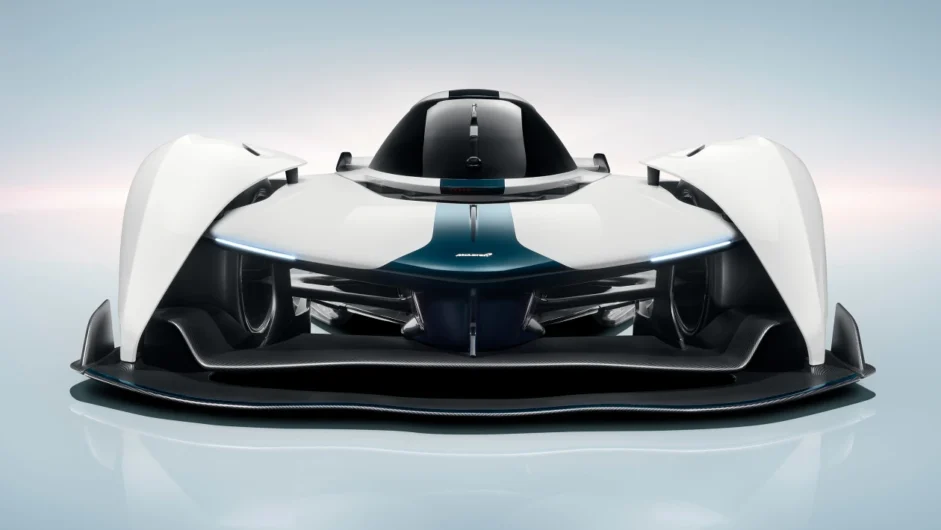
Suspension comes from McLaren’s F1 know how, with inboard pushrods at the front and pullrod activated torsion bars at the rear. The dampers are four-way manually adjustable and anti-roll bars, ride-height adjustable springs and heave springs are also incorporated. The rear suspension is mounted to the gearbox’s aluminium casing, with steel and carbon fibre used to manufacture the suspension’s components.
Despite it categorically not being a race car, the 18-inch slick tyres are to the same specification as those run on Le Mans prototypes and wet tyres are also provided for the forged centre lock aluminium rims. Braking? Six-piston monobloc aluminium callipers, carbon ceramic discs.
At 4.6-metres long, with a 2.8-metre wheelbase, over two-metres wide and 1.1-metres high the Solus GT is a low, lithe and compact machine and not that far from those of Toyota’s GR010 Hybrid hypercar that occupies the front of the grid in World Endurance racing. But the Solus GT isn’t a race car, it’s simply a track only hypercar built by a company that’s part of a group that is building cars eligible for as many race series as possible from F1, Indy Car and GT racing leaving one obvious headline discipline to commit to.
This article originally appeared at evo.co.uk
Copyright © evo UK, Autovia Publishing

